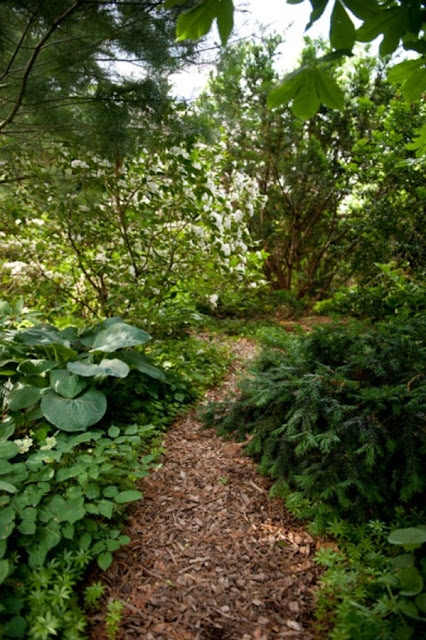 |
| Wouldn't it be nice? |
That can only happen, though, if I can keep my puppy out of their growing area.
To protect the new bed, I bought some wire fencing and metal posts. Right now, Lola finds newly turned soil so inviting that she has to join in with digging of her own. Maybe next year she’ll have developed some impulse control.
Setting up the new bed would be easier if I could do it when Lola wasn’t at home. She usually attends day care three days per week to socialize. She was there on Monday, and I took the opportunity to start work on the bed.
I measured 3 feet out from the vegetable garden fence and drove in three metal posts in a line parallel to the fence. I shaved off the turf in the defined area with my spade.
 |
| Stripping off the grass was the hard part |
I moved the grass and the soil clinging to its roots to an empty compost bin. Next I spread some composted manure on the newly exposed soil. I loaded the wheelbarrow with compost and covered the manure with a 3- or 4-inch layer.
I wrestled the roll of fencing out to the bed and strung a line of it along the perimeter of the new bed, attaching it to the vegetable bed’s fence posts at each end.
 |
| Fenced in, with amendments layered on the soil |
This wasn’t an ideal solution, because I hadn’t created a gate. At planting time, I’d have to roll back the fencing to get access to the soil. But I walked away imagining that I’d barred Lola from the newly dug area. Not so.
The next day I was incensed to find she’d been digging along the new fence line. Apparently my fence posts weren’t close enough to prevent her from pushing the wire fencing inward and getting some good traction to throw the compost around. Grumbling, I drove in some stakes between the posts to hold the fence more firmly in place.
 |
| Reinforcements |
On Monday evening, we got the word that the day care program was closing to all but the dogs of essential employees. Everyone else is staying at home to prevent the spread of coronavirus, so we’re not supposed to need doggie day care. I saw my spring gardening plans evaporating. Those dog-free days with time to work outside undisturbed would not be happening. For a while, I thought I might need to make this a non-planting year while I wait for Lola to grow up.
 |
| No future for my flower seedlings? |
That would make it really hard to tolerate the stay-at-home advisory, but I’d spend less time mad at my puppy.
By Saturday, I’d decided to try coexistence. I dug out the turf for the second half of the cutting bed, and Lola mostly heeded my warnings not to dig there. Can we both get what we want? We’ll see.
 |
| "Lola, no digging!" |


























